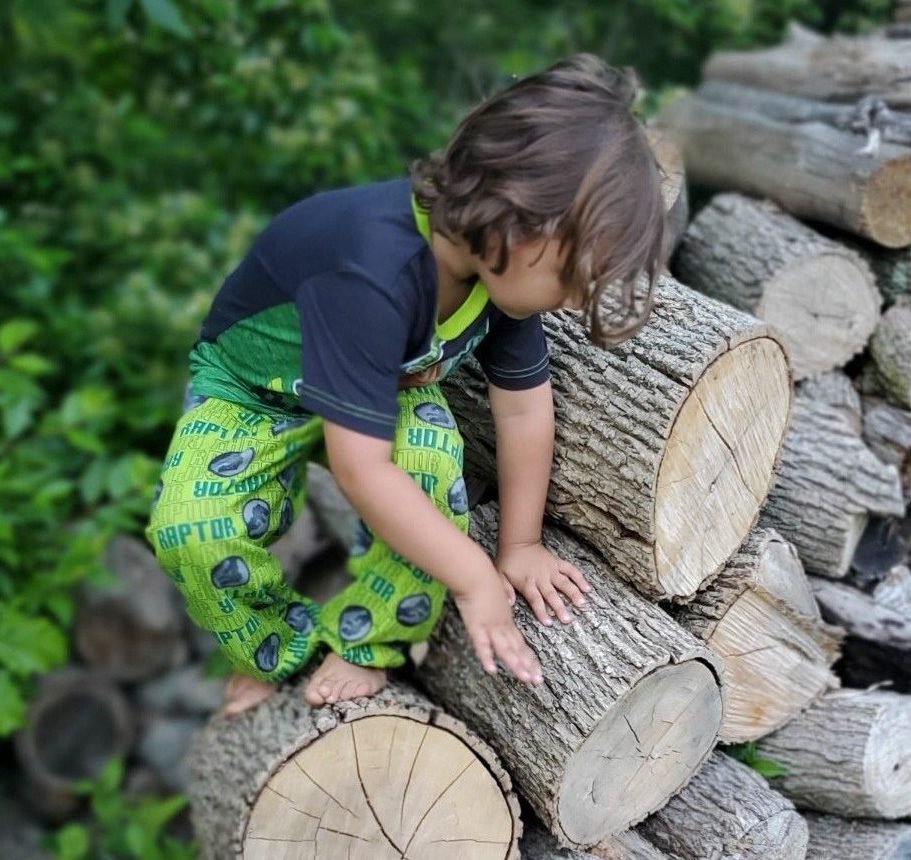As indicated in the 2018 Future of Jobs Report, creativity continues to be a desirable skill that is emerging as necessary in the workforce worldwide. Creative thinking, defined as intentionally using our minds to solve complex problems with new solutions, is at the heart of creativity. There are identifiable and teachable creative thinking skills that can help us to improve our creative thinking. That’s worth repeating:
There are identifiable and teachable creative thinking skills that can help us to improve our creative thinking.
Traditionally in schools, we hope that through project-based learning and exposure to the arts, students will graduate with the skills to be creative without explicitly teaching these skills.
As a teacher, I’m always trying to serve my students and do better. While teaching during a pandemic has been rather challenging, it’s also provided me with an opportunity to shake up my curriculum and teach creative thinking skills more intentionally through the visual arts. Here are three key lessons I’ve learned in teaching creative thinking skills intentionally in my classroom that can be translated to teaching creative thinking skills at home this summer (without putting your child in a structured learning setting).
Lesson #1: Start Simply
There are a lot of creative thinking skills. E. Paul Torrance developed the original eighteen, and more have been added as more research has been conducted. Below is a graphic with twenty creative thinking skills from the book Weaving Creativity into Every Strand of Your Curriculum.
Twenty skills to master may be overwhelming. Instead, pick one or two to focus on. Familiarize yourself with the skills that you pick. It’s easier to master one or two things than twenty. If you want to learn more, play with, or try out a warm-up with any of these skills, click here.
 In the classroom: Risk-taking is a skill I want every student I teach to develop. I want them to take risks visually with their work, with the processes they explore, and with how they use both tools and materials to discover new ways of working and to broaden their own visual repertoire. To encourage this, I turn to modeling. We learn about artists who in their time took risks, and we gain technical skills in various art processes through demonstrations. Then I allow students time to practice these techniques independently or in conjunction with other art processes. Whenever a student wants to use a tool in an atypical way, I encourage them too, usually with the words, “let’s see what happens.” Students then share their discoveries with the class, creating community knowledge. By setting examples, modeling, allowing time for practice, and creating a safe environment that supports visual risk-taking, students take risks (sometimes succeeding and sometimes failing) and learn from their experiences. They are practicing the creative thinking skill of risk-taking by doing this and growing in their creativity.
In the classroom: Risk-taking is a skill I want every student I teach to develop. I want them to take risks visually with their work, with the processes they explore, and with how they use both tools and materials to discover new ways of working and to broaden their own visual repertoire. To encourage this, I turn to modeling. We learn about artists who in their time took risks, and we gain technical skills in various art processes through demonstrations. Then I allow students time to practice these techniques independently or in conjunction with other art processes. Whenever a student wants to use a tool in an atypical way, I encourage them too, usually with the words, “let’s see what happens.” Students then share their discoveries with the class, creating community knowledge. By setting examples, modeling, allowing time for practice, and creating a safe environment that supports visual risk-taking, students take risks (sometimes succeeding and sometimes failing) and learn from their experiences. They are practicing the creative thinking skill of risk-taking by doing this and growing in their creativity.
At home: Identify a skill you want your children to develop. Ask yourself, how can I engage my child to develop this skill? For example, say you’ve chosen curiosity. Encourage curiosity on family outings or in the home by modeling “I wonder…” statements. For example, “I wonder why it’s cooler today when it was so hot yesterday.” Research the answer and learn about the weather with your child. Children mimic what they see, and this simple use of language can have a big impact on encouraging curiosity daily. After modeling, encourage children to create their own “I wonder” statements and find the answers. You could even start a daily practice of setting an “I wonder…” statement for the day or setting your intention, which brings us to lesson #2.
Lesson #2: Set an Intention
Whether you are choosing one skill a day, a week, or for the whole summer, be intentional about integrating creative thinking skills into your day. Identify which skill you want to learn and find a way to tie it into an existing activity.
In the classroom: With students returning from distance learning to in-person instruction amidst a pandemic and a national human rights movement, social/emotional wellbeing is more important than ever. In identifying this need, I chose to use the creative thinking skill of be aware of emotions as the main focus for my students. We were learning about whose stories are told and why in conjunction with the student’s social studies curriculum. In incorporating the creativity skill be aware of emotions, we looked at artists from around the world, their histories, and the broader context in which they were working. We then talked about how the artists, their work, and surrounding histories made us feel. Finally, we unpacked why we felt the way we felt and held discourse when students had differing views.
At home: Identify a creative thinking skill to develop that would benefit your child. Then, plug it intentionally into an activity or scenario as it arises. For example, say your child is in a me-centered phase and could grow by developing the skill of look at it another way – seeing things from the perspectives of others. The next time they pull the cat’s tail and the cat lashes out, leading to tears and trauma for all, once the dust has settled, lead your child through a visualization exercise where they are the cat. How does the cat feel in this situation? How would you feel if you were the cat? This may lead to better understanding, growth, and fewer cat/child altercations in the future, AND your child is practicing the creative thinking skill of look at it another way.
Lesson #3: Repeat to create habits
These skills, like any skill, require practice for mastery. Developing a habit can take 21 days, 28 days, or 66 days depending on where you get your information. Regardless of how long a habit takes to form, it takes both time and effort. If you are focusing on one or two creative thinking skills to develop and grow this summer, consider making it a daily practice to create a lasting habit. It’s the first days of developing a habit that make the biggest difference, so do your best to follow through at the beginning.
In the classroom: At my institution, the pandemic provided a unique opportunity to see students in the art classroom daily for short periods of time instead of on a rotation. COVID restrictions all year required us to practice being flexible daily. Announcing it at the beginning of class and preparing students to have a flexible mindset prepared them for success. For example, when I was teaching outdoors, students would ask to use a glue gun, a material they would normally have access to. With COVID protocols, glue guns were unavailable. In this situation, I would remind the student to be flexible and give them other adhesive options. This would require the student to use their flexibility to rethink their plan and problem solve within new constraints – another technique shown to help increase creativity.
At home: Make practicing your chosen creative thinking skill a part of the daily routine. Built into the morning routine or dinner conversation, get your children to engage in this practice. If your chosen creativity skill is to get glimpses of the future and your children are older, talk about the daily news and ask where do you think this is going? Have a discussion that engages your child in comprehending, analyzing, and synthesizing information while also defending a viewpoint on what will happen next. These are great conversational and interpretation skills that they’ll be practicing alongside the creative thinking skill of get glimpses of the future.
Hopefully, one or all of these lessons from the visual arts classroom on integrating creative thinking intentionally will help demystify creative thinking skills and how to intentionally employ them at home. As you embark on this journey, I encourage you to embrace being flexible – Rome wasn’t built in a day, and your children won’t become creative thinking savants overnight. If a selected skill, intention, or daily practice isn’t working for your family, make a change. It may take feedback from your children and some tweaking to create a practice that works for your family. Summer, and especially summer amidst COVID-19, should be about finding joy. However you integrate creative thinking skills at home, keep it joyful.
Looking for more ways to integrate creative thinking skills at home? For those with young children (ages 2-8), check out the book My Sandwich is a Spaceship: Creative Thinking for Parents with Young Children.
Three Key Takeaways
- Creative thinking skills are possible to integrate into your summer without putting your child into a structured environment.
- Start simply – familiarize yourself with the creative thinking skills and choose one or two to focus on. Next, set an intention – take your identified skill and tie it into an existing activity. Repeat using the creative thinking skill to create a lasting habit.
- Be ready to change and adapt as needed to fit your family’s needs, and keep it joyful.
If you enjoyed this amazing blog post, we know you will enjoy Keriann’s last post. Check it out:
Engage Your Students in Virtual Visual Arts: 13 Tips for Teachers
 Keriann Armusewicz has over a decade of experience teaching visual arts to students around the globe, having worked in schools from Singapore to New York. She holds a Masters in Art and Art Education from Teachers College and a Bachelor’s in Art Education from Buffalo State College. Keriann is currently pursuing her second master’s degree in Creativity and Change Leadership at SUNY Buffalo State. She is interested in educating teachers and parents about how authentic artmaking can cultivate children’s creativity. Keriann teaches art to K-5 students in Menlo Park, California.
Keriann Armusewicz has over a decade of experience teaching visual arts to students around the globe, having worked in schools from Singapore to New York. She holds a Masters in Art and Art Education from Teachers College and a Bachelor’s in Art Education from Buffalo State College. Keriann is currently pursuing her second master’s degree in Creativity and Change Leadership at SUNY Buffalo State. She is interested in educating teachers and parents about how authentic artmaking can cultivate children’s creativity. Keriann teaches art to K-5 students in Menlo Park, California.






Great article! Really appreciate this especially heading into summer. Perfect for mixing it up on the home front! Thank you for sharing.